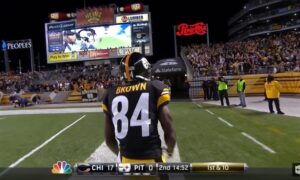It’s difficult to speak to the success or failure of a draft class in their rookie season, in all cases. Regardless of how well or poorly the group may have played in its first season, past results do not guarantee future replication.
Ryan Shazier, for example, began the season as a starter, but ended it as a reserve. Stephon Tuitt could hardly find a fistful of snaps to start the year, but closed out his rookie season starting the Pittsburgh Steelers’s last five games, including their playoff appearance.
Neither player could really be fairly said to have had a disappointing or overly positive season, in my estimation. There were highs and lows, but mostly, 2014 was a building block for the future when it comes to these players.
In the case of Martavis Bryant, his immediate productivity was a nice bonus, to be certain, and his steady growth was easier to discern. Nine touchdowns in 11 games is obviously nothing to sneeze at, nor is 21.1 yards per reception.
In between those picks was Dri Archer, the slight running back selected at the end of the third round. After seeing about a dozen snaps in his first game, he missed a pair of games with an injury, and then struggled to find any playing time. He was even inactive a couple of times late in the season.
But in the Wildcard game, with Le’Veon Bell out, Archer got a lot of work, though most of it came in the passing game. He had just one carry in the game, which went for minus one yard when he tried to bounce a run outside rather than hitting the hole inside the block of his tight end.
In all, Archer caught three passes in the game for 15 yards, with a long of seven on a play that looked to be a failure. He ran into his own lineman, but was able to spin and wiggle his way for positive yardage. Of course, he also had a 19-yard touchdown reception nullified by a holding call, which would no doubt have colored his performance in a different light had it stood.
While I rewatched the game and realized how much he played—about 30 or so snaps—I couldn’t help but notice the Steelers not really seeming to have a good strategy to use him in ways that do not make him a liability when he is not the target.
I observed, for example, that he was on the field for every single one of Ben Roethlisberger’s five sacks, and in no instance did the Steelers have him attempt to throw a block, or even much of a chip of any kind. Oncoming rushers hardly paid him any mind.
Perhaps there was a time or two in which Roethlisberger errantly failed to look in his direction—the double coverage interception to Antonio Brown late in the game comes to mind—but after finally watching a full Steelers game in which he saw significant playing time, I can’t help but come away with the conclusion that the offensive brain trust has some work to do to figure out how most effectively to use this weapon heading into next season.








